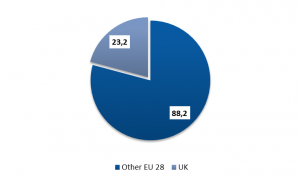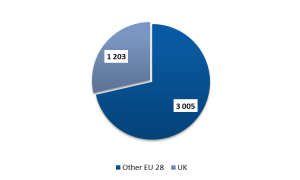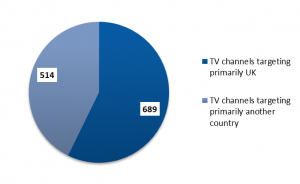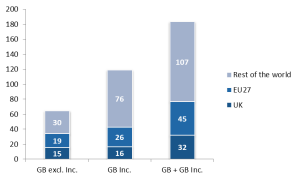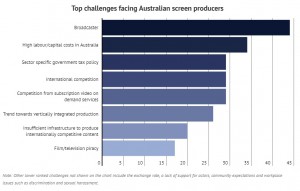MUMBAI: The march of the idiot box in India is unstoppable.
Though consumption of video on digital platforms is on the rise in the country, good old television continues to score in terms of penetration and has large headroom left to fill. As per the latest Broadcast India survey (BI-2018) by the joint industry body BARC India the country now has 197 million TV homes, up from 183 million in 2016.
While the growth has been at a steady 7.6%, total TV penetration is now at 66% against 64% in the last survey. The report is expected to be released later this week. The BI-2018 survey also notes that the number of individuals with access to television has gone up to 835 million; more than the population of Europe. In contrast, smartphone penetration in the country is still at around 300 million.
Jehil Thakkar, partner at Deloitte India, said that television is, and will remain, the biggest medium for the foreseeable future in India. “For at least 10 years, TV and appointment viewing will continue in India. The reason is that TV is extremely affordable — you can get a basic cable for Rs 120 a month or free-to-air channels via FreeDish for free.” The numbers definitely reflect strong growth in the TV universe.
It is also important because TV, collaring 45% of the total ad spends, continues to be the largest medium for advertisers and is expected to grow at 13% this year. As per GroupM’s estimate, advertisers are expected to spend `31,596 crore on the medium, making it a vehicle of choice in terms of brand building. “TV is a preferred medium of choice to reach masses and advertisers’ behaviour is not going to change suddenly,” Thakkar added.
TV PENETRATION
Interestingly, the five southern states — Andhra Pradesh, Telangana, Kerala, Karnataka, and Tamil Nadu — have more than 90% TV penetration. But states like Uttar Pradesh, Bihar, Rajasthan and a few North East Indian states have much lower number of TV sets, pulling down national TV penetration level to 66%. But, it also means that 34% of households in India are yet to buy a TV set.
The Narendra Modi government announced on May 1 that the country has achieved 100% electrification of 600,000 villages in the country. Most surveys suggest that once electricity reaches a household, the first electronic product it buys is a TV. “TV and refrigerator are two general use items people buy first once they get electricity,” Thakkar added.
This is BARC’s own survey, which will help the measurement body make changes to its universe estimation. The survey was carried out between November 2017 and March 2018. It covers 300,000 respondents across 4,400 towns and collects data on TV ownership, connection type, language preferences and other media consumption habits.
As per the survey, there is a clear rise in the middle class. NCCS (New Consumer Classification System) D and E TV households have seen almost 14% fall to 31 million households from 36 million in last survey.


